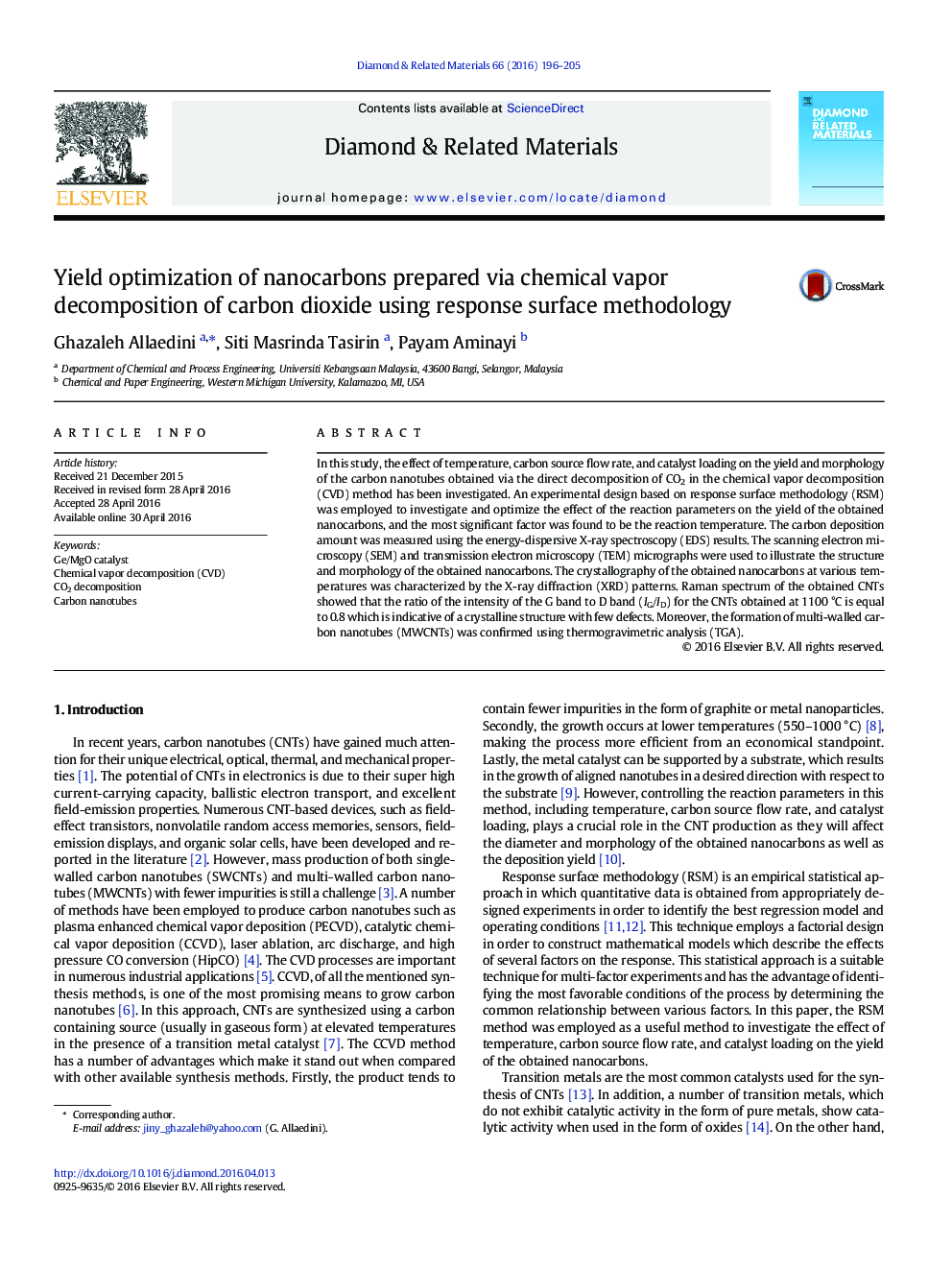| Article ID | Journal | Published Year | Pages | File Type |
|---|---|---|---|---|
| 701781 | Diamond and Related Materials | 2016 | 10 Pages |
•The effect of temperature, carbon source flow rate, and catalyst loading on the yield of nanocarbons prepared via CVD has been investigated.•Using Response Surface Methodology the reaction parameters are optimized over Ge/MgO catalysts.•CNTs have been produced with superior morphology through optimized reaction parameters in a direct decomposition of carbon dioxide
In this study, the effect of temperature, carbon source flow rate, and catalyst loading on the yield and morphology of the carbon nanotubes obtained via the direct decomposition of CO2 in the chemical vapor decomposition (CVD) method has been investigated. An experimental design based on response surface methodology (RSM) was employed to investigate and optimize the effect of the reaction parameters on the yield of the obtained nanocarbons, and the most significant factor was found to be the reaction temperature. The carbon deposition amount was measured using the energy-dispersive X-ray spectroscopy (EDS) results. The scanning electron microscopy (SEM) and transmission electron microscopy (TEM) micrographs were used to illustrate the structure and morphology of the obtained nanocarbons. The crystallography of the obtained nanocarbons at various temperatures was characterized by the X-ray diffraction (XRD) patterns. Raman spectrum of the obtained CNTs showed that the ratio of the intensity of the G band to D band (IG/ID) for the CNTs obtained at 1100 °C is equal to 0.8 which is indicative of a crystalline structure with few defects. Moreover, the formation of multi-walled carbon nanotubes (MWCNTs) was confirmed using thermogravimetric analysis (TGA).
Graphical abstractFigure optionsDownload full-size imageDownload as PowerPoint slide
